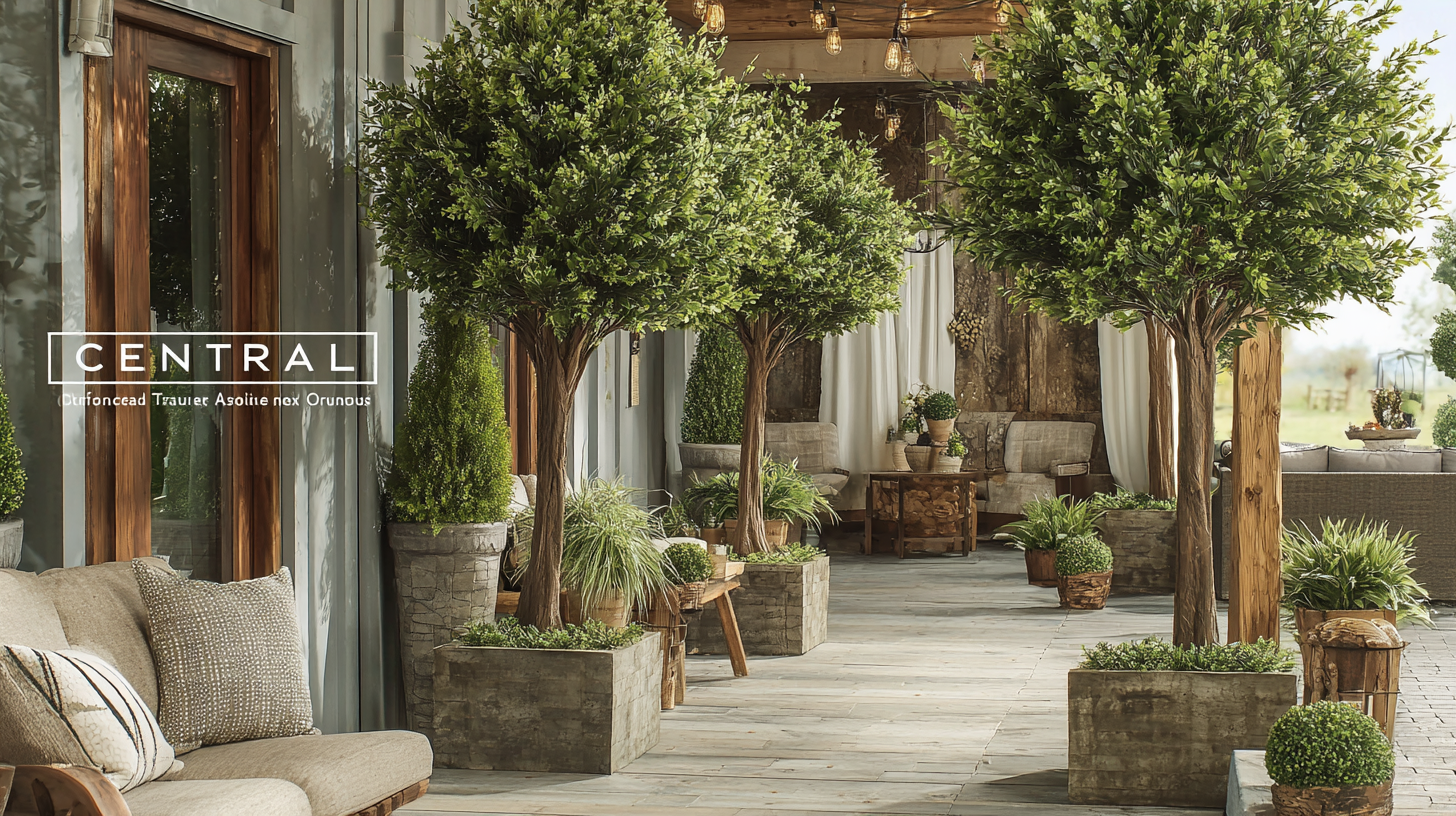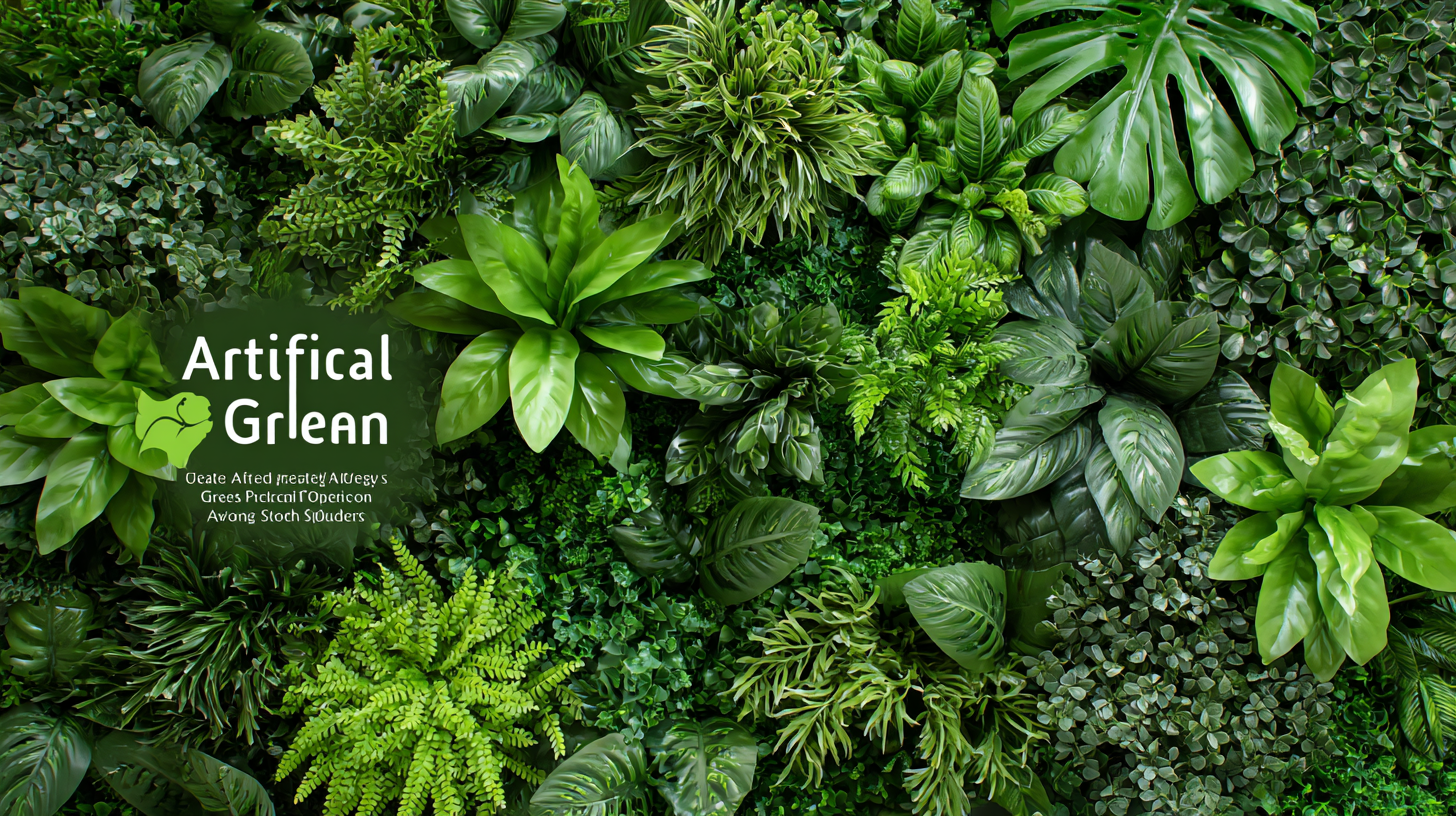
In recent years, the demand for artificial green plants for outside spaces has seen a significant rise, reflecting a growing trend towards low-maintenance, aesthetically pleasing landscaping solutions. According to a report by Research and Markets, the global artificial plant market is projected to reach USD 2.69 billion by 2026, driven primarily by advancements in manufacturing technology and an increasing preference for long-lasting, eco-friendly alternatives to natural plants. With the ability to enhance the visual appeal of gardens, patios, and balconies without the upkeep required by live flora, artificial green plants have transformed outdoor spaces into vibrant retreats. This blog will explore seven top artificial green plants that can elegantly elevate your outdoor environment while ensuring that your aesthetic choices align with the message of quality and trust associated with globally manufactured products.

Incorporating artificial green plants into outdoor spaces is an increasingly popular solution for those looking to enhance their environment without the heavy maintenance that natural greenery requires. With the pressing issues of water scarcity, particularly in drought-stricken areas, artificial plants provide a sustainable alternative to traditional grassy lawns. They offer the aesthetic appeal of vivid greenery without the constant need for watering and upkeep, thus saving time and resources.
Moreover, using artificial greenery can support urban sustainability by alleviating some of the ecological pressures that natural grass lawns impose. While grassy areas can be beneficial for local biodiversity, they often require excessive water and pesticides, which can harm the environment in the long run. By opting for artificial plants, homeowners can create vibrant outdoor spaces that contribute to aesthetic enjoyment without depleting natural resources. This shift not only beautifies urban settings but also aligns with broader sustainability efforts to preserve our water supply and promote eco-friendly practices.

The demand for artificial green plants has surged, driven by advancements in materials that enhance both durability and aesthetics. According to a report by Allied Market Research, the global artificial plants market is expected to reach $2.5 billion by 2026, reflecting a growing preference for low-maintenance yet visually appealing alternatives to live plants. This trend highlights innovative materials such as polyethylene (PE) and polyvinyl chloride (PVC), which not only provide realistic textures and colors but also resist fading under UV exposure, making them perfect for outdoor spaces.
When choosing artificial plants, consider opting for options with high-density polyethylene. This material mimics the look and feel of natural foliage while ensuring longevity and resilience against various weather conditions. For added aesthetic appeal, integrating plants with varying heights and textures can create depth and interest in your outdoor décor.
Tip: Regularly clean your artificial plants using a damp cloth or gentle soap to maintain their vibrant appearance and prevent dust accumulation. Additionally, placing your artificial plants in shaded areas can protect them from excessive UV rays, extending their life. By making informed choices on materials and maintenance, you can create an outdoor oasis that remains beautiful year-round.
| Plant Type | Material | Durability | Aesthetic Appeal | Maintenance |
|---|---|---|---|---|
| Artificial Fern | Polyethylene | High | Natural Look | Low |
| Boxwood Hedge | PVC | Medium | Sophisticated | Low |
| Faux Palm Tree | Silk | High | Tropical Feel | Medium |
| Artificial Succulent | Rubber | Very High | Modern | None |
| Lavender Plant | Polyester | High | Charming | Low |
| Artificial Orchid | Silk | High | Elegant | Medium |
| Artificial Bamboo | PVC & Silk | Very High | Exotic | Medium |
Artificial green plants have emerged as a game-changer for homeowners looking to enhance their outdoor spaces. These low-maintenance alternatives to live plants provide vibrant color and texture without the need for constant care. By strategically placing artificial greenery, homeowners can create focal points that draw the eye, ultimately enhancing curb appeal. Whether it's a serene patio adorned with lifelike ferns or flowering bushes framing the entrance, these plants provide a touch of nature that can significantly uplift the overall aesthetic of a property.
Moreover, incorporating artificial green plants can impact property value positively. Homebuyers often seek homes that present well, and a well-maintained outdoor space can set a property apart in a competitive market. With the resilience of artificial plants against various weather conditions, homeowners can ensure that their outdoor area remains inviting year-round. This not only saves time and money on landscaping but also projects an image of care and maintenance that is attractive to potential buyers. By making thoughtful choices with artificial greenery, property owners can create inviting spaces that elevate their home's market appeal and charm.

The environmental impact of artificial plants is a significant consideration for landscaping, especially as sustainable choices become increasingly indispensable. According to a report by Greenhouse, the production of artificial plants often utilizes materials like polyethylene and PVC, which are not biodegradable. However, many manufacturers are now exploring eco-friendly alternatives that minimize harm. For instance, choosing UV-resistant, recyclable materials can reduce the lifecycle impact of these decorative pieces.
Tip: When selecting artificial plants, look for those labeled as recyclable or made from sustainable materials, which can enhance your outdoor space without negatively impacting the environment.
Artificial plants can also contribute to water conservation. Traditional landscaping requires constant watering, which can lead to excessive water usage. A study by the U.S. Environmental Protection Agency indicated that about 30% of residential water use is dedicated to outdoor irrigation. By incorporating artificial greenery, homeowners can reduce their water footprint while still beautifying their gardens.
Tip: Use a combination of artificial plants with native landscaping to minimize maintenance and maximize the ecological benefits of your outdoor area.
When considering the aesthetics of your outdoor space, the choice between artificial and natural plants can significantly influence both the look and the budget of your landscape design. Generally, natural plants may appear appealing with their rich colors and diverse textures, but they often come with hidden costs. Gardening requires ongoing investments in maintenance, water, soil, and occasional replacements as plants succumb to pests or weather conditions. On average, the annual upkeep for a natural garden can range from a few hundred to over a thousand dollars depending on the size and type of plants involved.
In stark contrast, artificial plants provide a low-maintenance alternative that often proves to be more cost-effective over time. Once purchased, they do not require watering, fertilizing, or seasonal replacements, which means their costs remain fixed. Additionally, quality artificial plants can replicate the beauty of natural foliage without the unpredictability of natural growth cycles. While the initial investment may be similar, the long-term savings associated with artificial greenery can make them a more practical option for those looking to create a stunning outdoor space without ongoing financial commitment.
